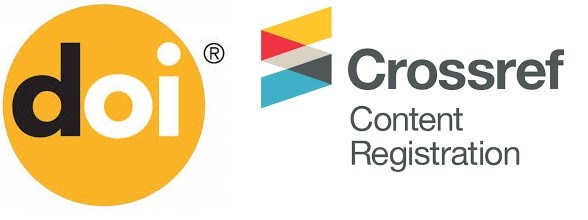The Orientation Of Multiple Intelligence Framework In Learning Arabic In Digital Era
DOI:
https://doi.org/10.32699/liar.v5i2.2001Kata Kunci:
Arabic Learning, Digital Era, Multiple Intelligence TheoryAbstrak
Pembelajaran bahasa Arab berbasis digital sudah menjadi keniscayaan yang harus dilakukan oleh setiap guru di era teknologi. Konsep multiple intelligences hadir sebagai jawaban bagi sebagaian persepsi yang mengungkapkan bahwa terdapat siswa yang bodoh dalam bidang bahasa. Penelitian ini bermaksud mengeksplorasi kerangka teori multiple intelligences dalam pembelajaran bahasa Arab di era digital. Menggunakan pendekatan kualitatif dengan metode library research dalam mendeskripsikan temuan penelitian. Data penelitian didapatkan dari dari sumber primer dan sekunder berupa artikel, prosisiding dan buku. Data yang terkumpul kemudian dipaparkan menggunakan teknik descriptive content analysis secara deduktif. Penelitian ini menunjukkan bahwa era digital menjadi peluang besar bagi guru dalam menyusun pembelajaran berbasis multiple intelligences yang disesuaikan dengan kondisi dan kebutuhan siswa. Selain aspek di atas, konsep multiple intelligences yang diadopsi dalam pembelajaran bahasa Arab memberikan ruang untuk dapat bersaing dengan mata pelajaran lainnya yang sudah menerapkan multiple intelligences terlebih dahulu. Untuk menyempurnakan temuan ini, perlu dilakukan penelitian lanjutan untuk menguji hasil pembelajaran menggunakan multiple intelligences dengan pembelajaran konvensional tanpa konsep multiple intelligences.
Referensi
Al-Qatawneh, Sami Sulieman, Najeh Rajeh Alsalhi, Mohd Elmagzoub Eltahir, and Omar Ahmed Siddig. “The Representation of Multiple Intelligences in an Intermediate Arabic-Language Textbook, and Teachers’ Awareness of Them in Jordanian Schools.” Heliyon 7, no. 5 (2021): e07004. https://doi.org/10.1016/j.heliyon.2021.e07004.
Aminah, Zukhaira, and Moh. Yusuf Ahmad Hasyim. “Pengembangan Metode Pembelajaran Keterampilan Berbicara Bahasa Arab Dengan Kooperatif Berbasis Teori Kecerdasan Majemuk Pada Siswa Kelas VII Madrasah Tsanawiyah.” Lisanul’ Arab: Journal of Arabic Learning and Teaching 7, no. 1 (2018): 8–16. https://doi.org/10.15294/la.v7i1.26080.
Amstrong, Thomas. Sekolahnya Para Juara: Menerapkan Multiple Intelligences Di Dunia Pendidikan. Bandung: Kaifa, 2002.
Azmi Zakaria, Mohd, and Azlina Abdul Aziz. “The Impact of Digital Storytelling on ESL Narrative Writing Skill.” Arab World English Journal, no. 5 (2019): 319–32. https://doi.org/10.24093/awej/call5.22.
Brown, H. Douglas. Principles of Language Teaching and Learning, (4th Ed.). White Plains, NY: Longman, 2000.
Campbell, Linda, Bruce Campbell, and Dee Dickinson. Multiple Intelligence: Metode Terbaru Melesatkan Kecerdasan. Depok: Inisiasi Press, 2005.
Chen, Wenting, and Shulin Yu. “A Longitudinal Case Study of Changes in Students’ Attitudes, Participation, and LLearning in Collaborative Writing.” System 82 (2019): 83–96. https://doi.org/10.1016/j.system.2019.03.005.
Cichocki, Andrzej, and Alexander P. Kuleshov. “Future Trends for Human-AI Collaboration: A Comprehensive Taxonomy of AI/AGI Using Multiple Intelligences and Learning Styles.” Computational Intelligence and Neuroscience 2021 (2021). https://doi.org/10.1155/2021/8893795.
Effendy, Ahmad Fuad. Metodologi Pengajaran Bahasa Arab. Malang: Misykat, 2005.
Gardner, Howard. Frames of Mind: The Theory of Multiple Intelligences. New York: Basic Books, 1983.
———. Intelligence Reframed: Multiple Intelligences for the 21st Century. New York: Basic Books, 1999.
Hassunah-Arafat, Safieh Muhamad, Dorit Aram, and Ofra Korat. “Early Literacy in Arabic: The Role of SES, Home Literacy Environment, Mothers’ Early Literacy Beliefs and Estimation of Their Children’s Literacy Skills.” Reading and Writing, no. 0123456789 (2021). https://doi.org/10.1007/s11145-021-10158-1.
Hosni, Afraa Ali Al, and Rayya Salim Al-Manthari. “Multiple Intelligences among Ninth-Grade Students in the Sultanate of Oman.” World Journal of Education 11, no. 2 (2021): 15. https://doi.org/10.5430/wje.v11n2p15.
Jado, Saleh Mohammad Abu. “The Level of Multiple Intelligences in Arabic Language Textbooks for Grades from (1-4) in Jordan in Light of Gardner’s Theory.” Creative Education 06, no. 14 (2015): 1558–72. https://doi.org/10.4236/ce.2015.614156.
Kaplan, Danielle E. “Creativity in Education: Teaching for Creativity Development.” Psychology 10, no. 02 (2019): 140–47. https://doi.org/10.4236/psych.2019.102012.
Khomenko, Leonid, Tetiana Rastruba, Oleksandr Parkhomenko, Lyudmyla Shumska, Liudmyla Kostenko, and Oleksii Pavlenko. “Peculiarities of Forming Students’ Motivation to Music-Teaching Activity in Higher Education Institutions (HEI).” Brain. Broad Research in Artificial Intelligence and Neuroscience 12, no. 3 (2021): 319–42. https://doi.org/10.18662/brain/12.3/234.
Larabi Marie-Sainte, Souad, Nada Alalyani, Sihaam Alotaibi, Sanaa Ghouzali, and Ibrahim Abunadi. “Arabic Natural Language Processing and Machine Learning-Based Systems.” IEEE Access 7 (2019): 7011–20. https://doi.org/10.1109/ACCESS.2018.2890076.
Mackecher, Dorothy. Making Sense of Adult Learning, (2nd Ed.). Canada: University of Toronto Press Incorporated, 2004.
Mahmudi, Arifka, Suci Ramadhanti Febriani, Maidatul Hasanah, and Zakiyah Arifa. “Classroom Management and Arabic Learning Process Based on Multiple Intelligences in Elementary School.” Arabiyat : Jurnal Pendidikan Bahasa Arab Dan Kebahasaaraban 6, no. 2 (2019): 222–37. https://doi.org/10.15408/a.v6i2.11365.
Makruf, Imam, and Anisatul Barokah. “Peningkatan Mutu Pembelajaran Bahasa Arab Berbasis Aktivitas Di Madrasah Ibtidaiyah.” Al-Mahara Jurnal Pendidikan Bahasa Arab 6, no. 1 Juni (2020): 39–58. https://doi.org/DOI: 10.14421/almahara.2020.061-03.
Murad, Odeh Suleiman, Raed Ahmad Al-kriemeen, and Walled Mohammad Al-shatarat. “Multicultural Education Suggested Educational Program Based on the Multiple Intelligences Theory and Its Influence in the Development of Communication Skills and Retention of Learning Influence in Kindergartens (KG2).” Multicultural Education 7, no. July (2021): 278–86. https://doi.org/10.5281/zenodo.5103835.
Oudeh, Thaer Yousef. “Teaching Arabic Language to Speakers of Other Languages (Between Tradition and Innovation).” Elementary Education Online 18, no. 4 (2019): 2157–71. https://doi.org/10.17051/ilkonline.2019.641214.
Popenici, Stefan A.D., and Sharon Kerr. “Exploring the Impact of Artificial Intelligence on Teaching and Learning in Higher Education.” Research and Practice in Technology Enhanced Learning 12, no. 1 (2017). https://doi.org/10.1186/s41039-017-0062-8.
Ritonga, Apri Wardana, Mahyudin Ritonga, Talqis Nurdianto, Martin Kustati, Rehani, Ahmad Lahmi, Yasmadi, and Pahri. “E-Learning Process of Maharah Qira’ah in Higher Education During the Covid-19 Pandemic.” International Journal of Higher Education 9, no. 6 (2020): 227–35. https://doi.org/10.5430/ijhe.v9n6p227.
Ritonga, Apri Wardana, Wildana Wargadinata, Nur Hasan, and Bakri Mohammad Bkheet Ahmad. “Teacher’s Challenges in Implementing HOTS in Learning Arabic During Covid-19 Pandemic.” Izdihar : Journal of Arabic Language Teaching, Linguistics, and Literature 4, no. 1 (2021): 1–14. https://doi.org/10.22219/jiz.v4i1.15606.
Sa’diyah, Halimatus, and Maman Abdurahman. “Pembelajaran Bahasa Arab Di Indonesia: Penelitian Terhadap Motivasi Belajar Bahasa Asing.” Lisanan Arabiya: Jurnal Pendidikan Bahasa Arab 5, no. 1 (2021): 51–69. https://doi.org/10.32699/liar.v5i1.1665.
Şener, Sabriye, and Ayten Çokçalışkan. “An Investigation Between Multiple Intelligences and Learning Styles.” Journal of Education and Training Studies 6, no. 2 (2018): 125. https://doi.org/10.11114/jets.v6i2.2643.
Shodiq, Muhammad Jafar, and Nafiatur Rasyidah. “Metode Pembelajaran Berbasis Multiple Intelligences Dalam Meningkatkan Prestasi Belajar Bahasa Arab.” Arabia 8, no. 1 (2016): 142–64.
Tabieh, Ahmad A.S., Mohamed M. Al-Hileh, Haya M.J. Abu Afifa, and Hiba Yacoub Abuzagha. “The Effect of Using Digital Storytelling on Developing Active Listening and Creative Thinking Skills.” European Journal of Educational Research 10, no. 1 (2020): 13–21. https://doi.org/10.12973/EU-JER.10.1.13.
Yavich, Roman, and Irina Rotnitsky. “Multiple Intelligences and Success in School Studies.” International Journal of Higher Education 9, no. 6 (2020): 107–17. https://doi.org/10.5430/ijhe.v9n6p107.
Unduhan
Diterbitkan
Terbitan
Bagian
Lisensi
Authors who publish with this journal agree to the following terms:
a. Authors retain copyright and grant the journal right of first publication with the work simultaneously licensed under a Creative Commons Attribution-ShareAlike 4.0 International License. that allows others to share the work with an acknowledgement of the work's authorship and initial publication in this journal.
b. Authors are able to enter into separate, additional contractual arrangements for the non-exclusive distribution of the journal's published version of the work (e.g., post it to an institutional repository or publish it in a book), with an acknowledgement of its initial publication in this journal.
c. Authors are permitted and encouraged to post their work online (e.g., in institutional repositories or on their website) prior to and during the submission process, as it can lead to productive exchanges, as well as earlier and greater citation of published work (See The Effect of Open Access).












